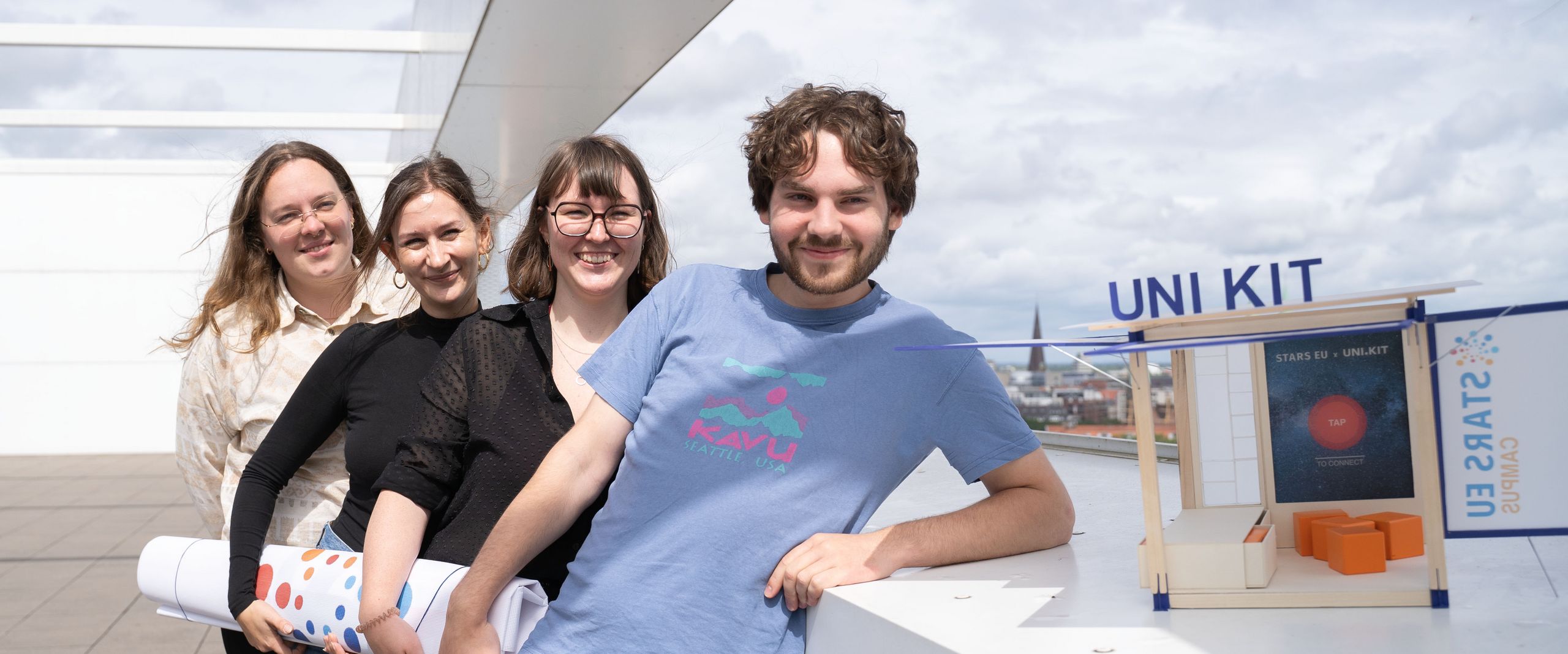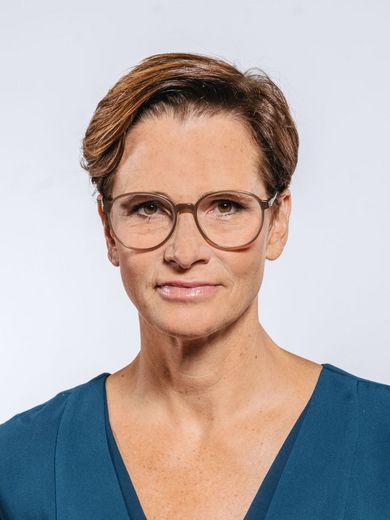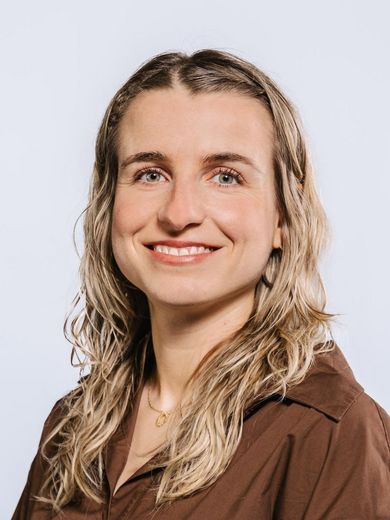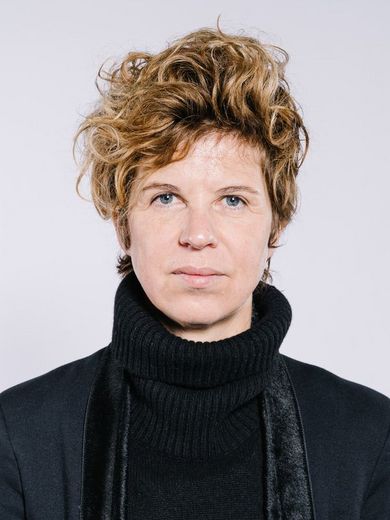
Hochschule Bremen (HSB) - City University of Applied Sciences is working with eight universities of applied sciences (HAW) to create a European university. The partners are located in the Netherlands, Sweden, France, Spain, Portugal, the Czech Republic, Poland and Albania. How can common, unifying campus spaces be created in this European alliance? An international group of students from the School of Architecture at HSB and the Integrated Design programme at the Hochschule für Künste Bremen (HfK) have developed ideas for this in their cooperation project ‘Interspace’. Examples include an intercultural pavilion as a meeting place, a mobile research laboratory and a transnational STARS EU festival.
In eight project groups, the 35 students presented models, drawings, installations and artistic positions to the HSB public and STARS EU project partners that deal with the future of the campus in the field of tension between space, structure and European cooperation. Three projects were honoured by a six-member jury made up of members of HSB, HfK Bremen and the partner universities from Tenerife (Spain) and Krakow (Poland). Another was particularly mentioned. The hybrid event took place at Hochschule Bremen on 8 July 2025. The eight student ideas are presented below:
‘UNI.KIT - out of the box’ offers space for personal and intercultural exchange and event formats in the form of a pavilion made of regional wood. The tree elements for the pavilion, including construction plans, a standardised corporate design and digital tools such as info screens, will be sent to each STARS EU location and set up at a suitable location. The pavilion will offer seating where people can linger and exchange ideas.
Project group: Derya Kuziak, Marlene Laurösch, Jalina Oetjen and Amon Osterkamp (all HSB)
With their project ‘CLA!M THE CAMPUS - Just do it’, the students want to activate unused spaces on each of the respective nine STARS EU -campus and uncover their potential. ‘Instead of designing new buildings, we are building on what already exists and creating inviting places to linger,’ they explain. During the summer semester, the students at HSB temporarily used the forecourt in front of the canteen and the roof terrace on the white AB building at the Neustadtswall campus with tables, chairs and ping-pong tables. They designed and conceptualised the wooden furniture beforehand. The basic idea: The furniture is easy to install and remove. The furniture elements can be easily transported in a handy trolley.
Project group: Pia Burghardt, Nora Constantin, Hannes Mehrtens, Lennart Mönnekes, Johanna Nolte, Alessa Padberg, Julia Redmann & Fiona Sanneh (all HSB)
A large, visible interactive screen on every STARS EU campus, on which light and dark colour elements can be seen - this is the heart of the ‘CAMPUS AURA - the sense of campus’ project. The digital artwork is intended to reflect the current mood of students and staff: light colours stand for positive emotions, dark for negative ones. The information for this is entered by members of the university via surveys that are regularly carried out on the nine campus. ‘We want to make the often invisible atmosphere of campus life visible in a visual experience,’ explain the students. ‘CAMPUS AURA’ is intended to offer a new opportunity to shape, question and visualise the identity of the campus - and thus provide an impetus for new conversations and insights.
Project group: Jonas Bultmann, Hannah Christoffers, Jana zum Felde (all HSB) and Erasmus student Federico Pazzaglia (University of Ferrara, Italy)
The ‘STARS of Europe FESTIVAL’ project was not awarded a prize, but received special mention from the jury: ‘We see our project as a visionary cultural initiative of the STARS EU alliance, which brings together the nine universities across Europe for a ten-year journey of exchange and collaboration,’ explain the students. Each year, one university will host the festival - with live events, student-organised stands and digital showcase projects. The core idea is to celebrate cultural identities, promote student innovation and encourage dialogue on annually changing topics such as sustainability, inclusion or digital transformation. The concept combines physical and virtual formats, enabling broad participation and cross-border engagement. In its tenth year, all partners will come together in Brussels for a grand finale.
Project group: Alina Tschernova and Justine Kremming (both HSB) and HSB-Erasmus students Martina Rubbini (Università di Ferrara, Italy) and Raquel de Carvalho Frade (Universidade Federal da Paraíba, Brazil)
The key element of the project are colourful, multifunctional cubes. They serve as seating, tables or play surfaces at each STARS EU location and can be used and arranged as required by the respective partner university. A so-called ‘Storage.Unit’ serves as storage for the cubes. An integrated linking wall - a transparent LED panel - shares visual impressions between the European university locations in real time.
Project group: Vivienne Gerlach, Semanur Gezer, Rim Ramadan and Janine Sibbing (all HSB)
With ‘RETHINK CAMPUS - shaped by students, shared by all’, the students have developed the idea for a new teaching and learning programme that will transform the campus into a real-world laboratory. Students from different disciplines are involved in designing their learning space in a practical and interdisciplinary way right from the start. The focus is on a five-year, interactive process that will be supported by teachers, the city and practice partners. A real place called ‘Baubude’ serves as a meeting point for coordination, exchange and joint work - and will remain in place beyond the project duration: as an open studio in which future project cycles can be further developed. This learning model is intended to open up a new perspective for the STARS EU universities in order to rethink learning in a future-orientated and sustainable way.
Project group: Sherin Issa, Celine Penniggers, Finja Ruschmeyer (all HSB) as well as Katerin Jaramillo Motoche (Universidad Rey Juan Carlos I, Madrid) and Guillermo Ruiz Benítez de Lugo Pérez (Universidad de La Laguna, Tenerife)
The project group has designed a STARS EU multitool to help people network and participate. The multitool is an interdisciplinary seminar organised by the nine STARS EU universities. The aim is to promote intercultural exchange and make regional topics visible throughout Europe. Each semester, a topic typical of the region with potential for further development is to be selected, conceptualised and incorporated as a seminar into an app specially designed for STARS EU. 'In Bremen, for example, the topic could be coffee - with its history and the many roasting companies that still exist today,' they explain. All relevant information on the STARS EU locations and their current projects can be accessed via the app.
Project group: Julia Tecklenborg, Gabriel Wirthwein and Ruby Zakrzewska (all HSB)
With their ‘Real.Space.Lab’, the students have developed a mobile, modular research laboratory that can be used by all STARS EU partners for scientific purposes. It serves as a place for interdisciplinary exchange between European universities and local stakeholders. The structure is based on a lightweight carbon frame, hydraulic telescopic supports and ETFE foil, which provides both insulation and daylight. The module is transportable, expandable on site and adaptable to different local conditions. Site-specific, experimental learning is at the centre of the project. The ‘Real Space Lab’ is to be set up temporarily at different locations and create a mobile environment that combines knowledge, community and innovation.
Project group: Tim Josephi, Pauline Stey, Luca Weers (all HSB) as well as Finn Herzog and Emil Ackmann (both HfK Bremen)
‘Interspace - Ou(te)r Campus is not finished at the end of the semester,’ says HSB Professor Ulrike Mansfeld from the School of Architecture. "Our experience gained so far forms the starting point for the next project phase at European level. Together with all nine STARS EU partner universities, we want to open up the format internationally in 2026."
The aim is to take up the impetus from the current semester, think it through further - and translate it into longer-term, institutionally anchored developments.
This will create a European space that can meet the needs of students and in which ideas can grow - across disciplinary and geographical boundaries - the co-creation campus.
The following people were involved in the project in the summer semester and contributed to the organisation with great commitment. A big thank you goes to:

Prof. Ulrike Mansfeld
Entwerfen, Darstellung und Gestaltung
+49 421 5905 2303
Email

Prof. Maria Petra Clarke
Building Construction
+49 421 5905 2767
Email

Janina Ebner
STARS EU | Co-Creation Campus
+49 421 5905-2381
Email

Prof. Dr.-Ing. Claudia Kromrei
Architekturtheorie und Baugeschichte
+49 421 5905 2259
Email